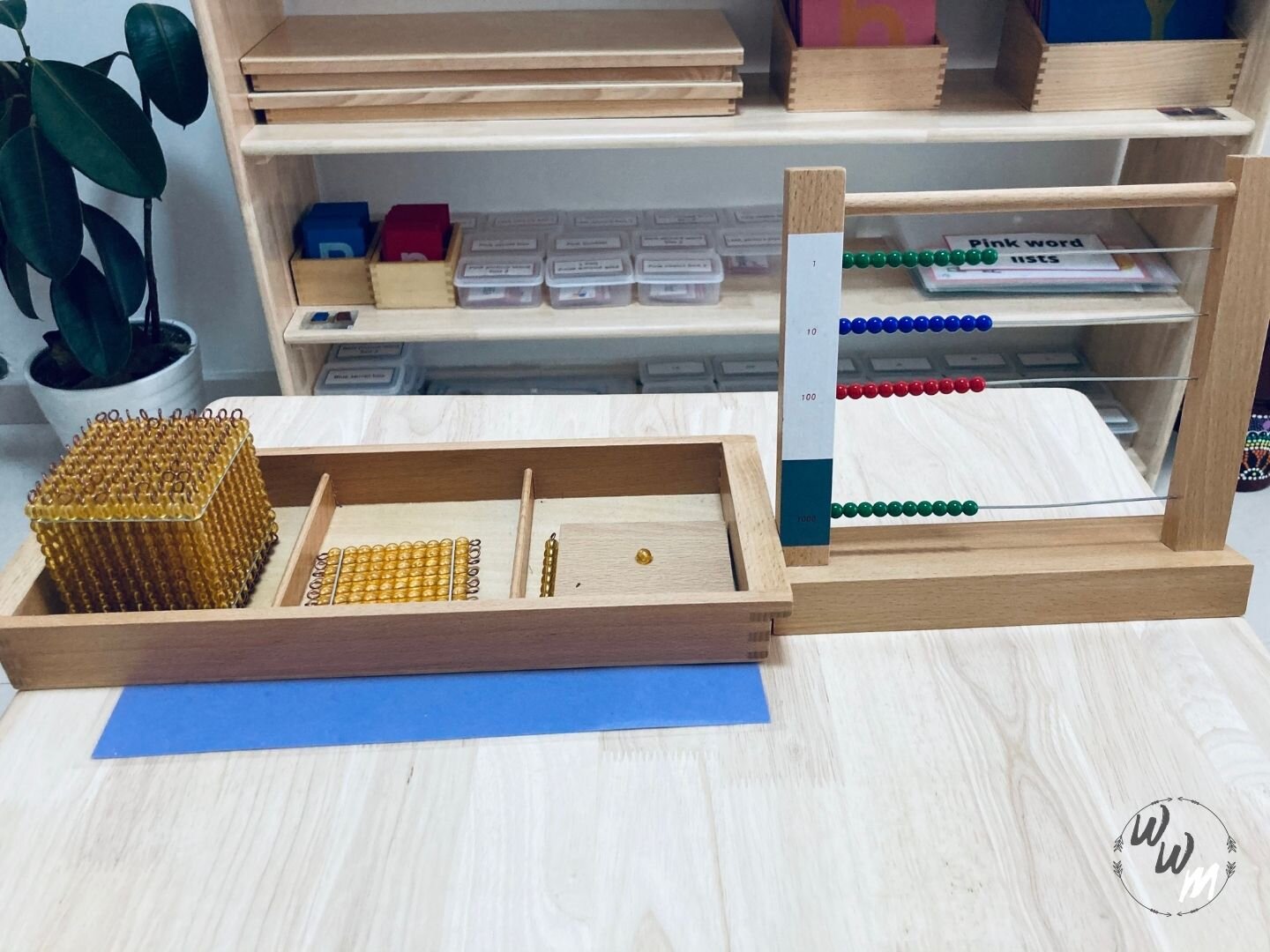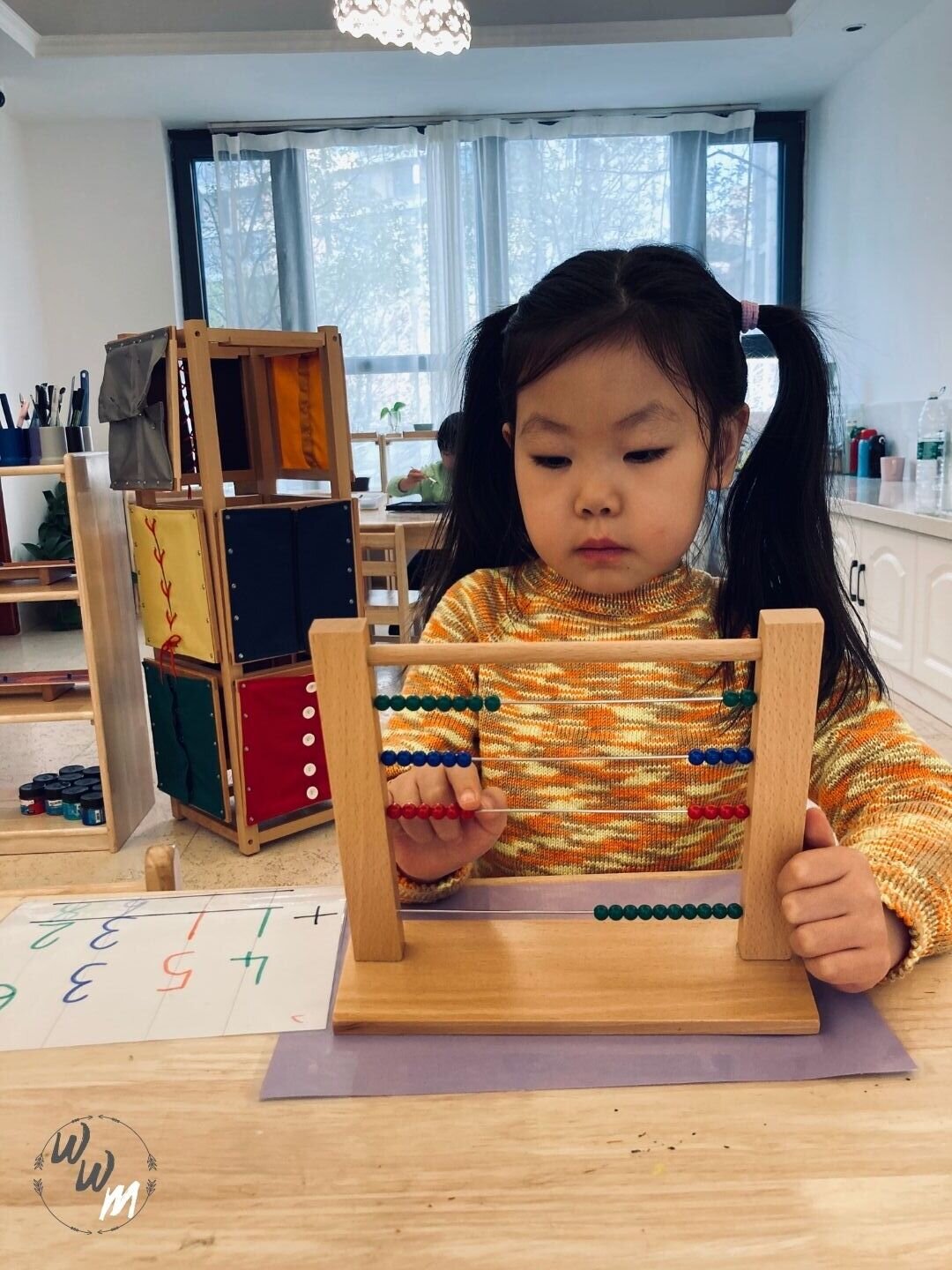The Abacus
The Abacus which is used in a Montessori classroom is quite different from abacuses for children. This beautifully designed Abacus has the numbers 1, 10, 100, and 1000 on the left-hand side of the wooden frame, with the correct coloured beads on each row. These beads represent units, tens, hundreds, and thousands.
The various functions of the Montessori Abacus include counting, adding, multiplying, and subtracting. The following activities you can see listed below, all use the Abacus:
The Abacus: bridging exercise
In this activity, the directress uses the Montessori Abacus and the golden bead Presentation Tray. The child learns to associate the golden beads with the beads on the abacus, as well as the child learns the names and values of the beads on the abacus.
The Abacus: counting on the abacus
The directress shows the child how to count and change all the beads on the abacus in this Montessori Math activity. The child becomes more familiar with the abacus, as well as this activity prepares the child for operations with the abacus.
The Abacus: formation of a number
This is a wonderful testing game for the directress to do with the child to see exactly where he is at. The child gets practice in forming numbers, as well as this Montessori Math exercise prepares the child for operations done later on with the abacus.
The Abacus: counting and recording
This activity is a little more difficult, as the child is asked to count on the abacus, and record the beads on a white piece of paper. Where Th, h, t, and u are headed in specific colour coded pens. This activity reinforces place value in the decimal system, as well as familiarises the child more with the abacus.
Operations with the abacus: Static addition (without change)
The directress shows the child yet another wonderful way to find the sum of two numbers. This time using the Montessori abacus. This Montessori addition exercise is more ‘abstract’ to the child, which therefore is more difficult.
Operations with the abacus: Static multiplication (without change)
The child learns a new way of finding the product of two numbers using the abacus. The child is encouraged to understand multiplication, simply as repeated addition. As well as he will have to sustain a high level of concentration throughout this exercise as less ‘concrete’ materials are being used.
Operations with the abacus: Static subtraction (without change)
The directress teaches the child how to find the difference between numbers using the Montessori abacus. This activity is a little different as when subtracting two numbers, the child only builds the whole minuend first. The directress then shows the child how to take away the quantity of the subtrahend from the beads, beginning with the units.



